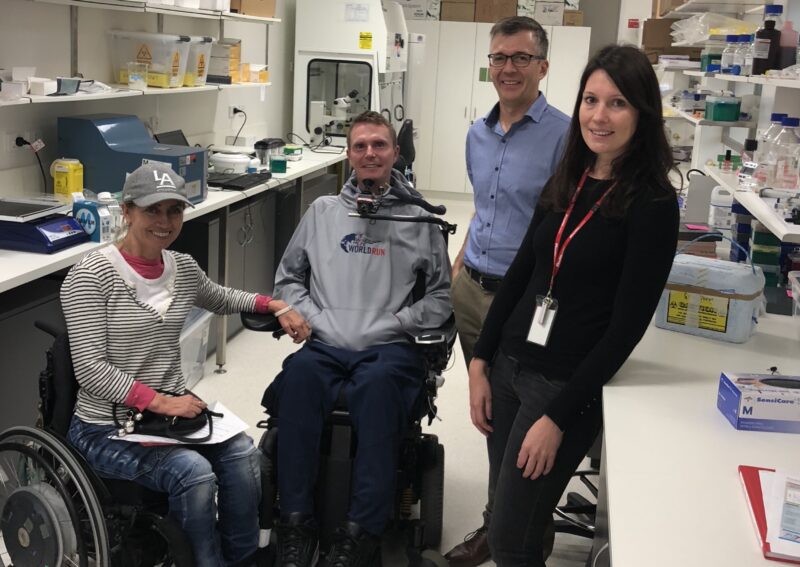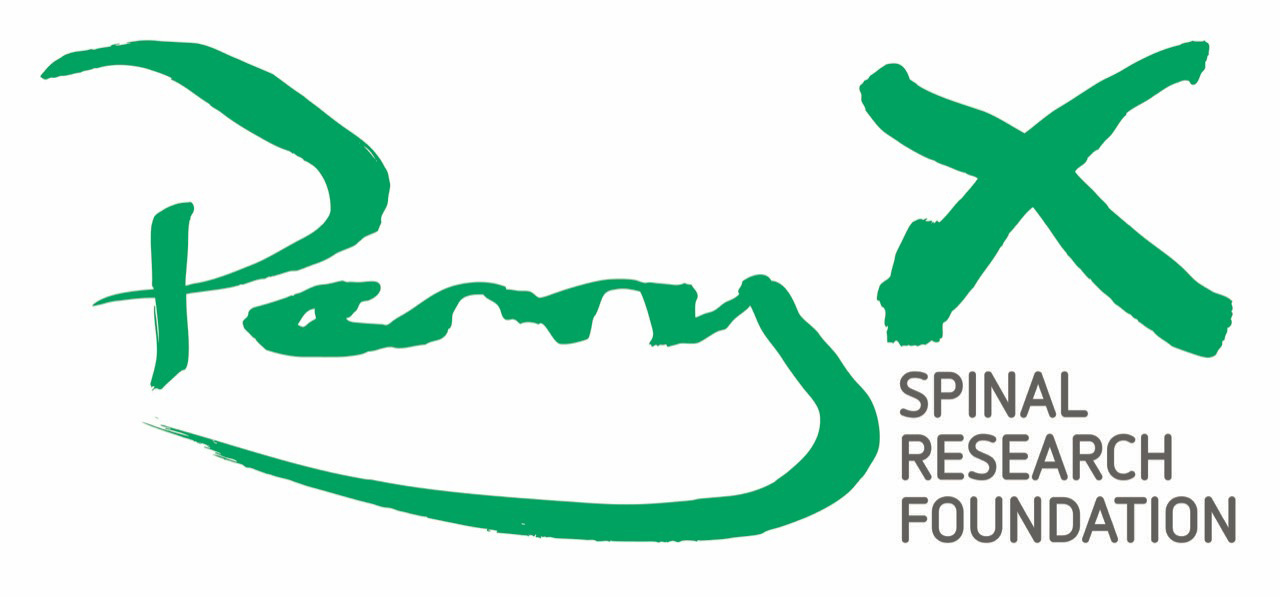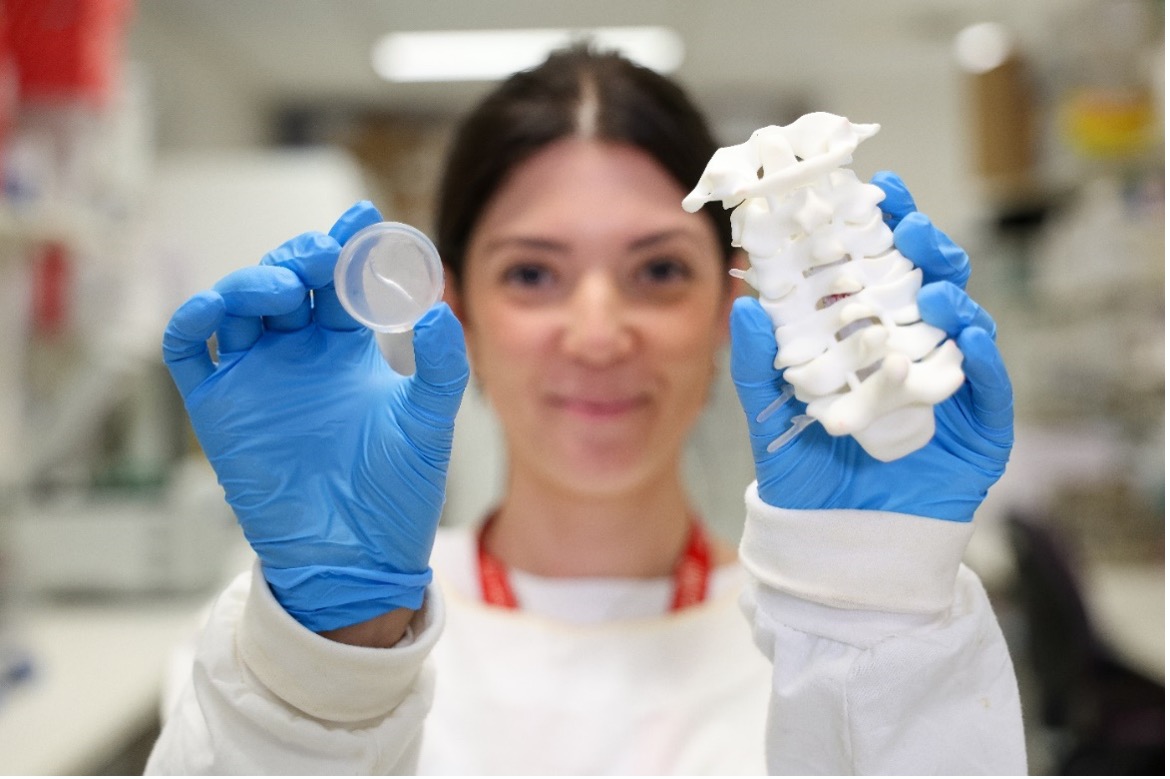When spinal cord injury happens, there is a lot of damage and the dead cells need to be removed before regeneration can occur. However, while the normal immune response can remove the dead cells, it can also cause inflammation which can make the injury worse. One of the great benefits of OECs is that they can help clean up the dead cells, and they can do it without causing much inflammation. Thanks to PCSRF, the Spinal Injury Project team has been exploring how we can get the OECs to do this job even better.
PhD student, Francesca Oieni has examined how the cells respond after injury and how they interact with other cells. She found key differences in how OECs respond in the different conditions which confirms that OECs are responsive to dead cells.
PhD student, Tobias Seeberger has examined how a growth factor can be used to stimulate the OECs to make them more reactive to dead cells. This finding allows us to tailor the activity of OECs to make them ready for action before they are transplanted.
PhD student, Souptik Basu has examined OECs in conditions that resemble an injury site, with inflammatory responses and growth factors. He found that OECs continue to be active in cleaning up dead cells even in the harsh conditions.
The outcome of this research is that the Spinal Injury Project team now have in-depth understanding of how the cells can be used to help clean up the injury site and how the activity can be turned on and turned off as needed.
Fran, Tobi and Souptik have all completed their PhDs. Fran is now a Research Fellow in the team and is working on how these exciting findings can be incorporated into the nerve bridges to make them even more effective in future clinical trials, so stay tuned for more updates from Fran.
Publications
Chen M, Vial ML, Tello Velasquez J, Ekberg JA, Davis RA, St John JA. 2018. The serrulatane diterpenoid natural products RAD288 and RAD289 stimulate properties of olfactory ensheathing cells useful for neural repair therapies. 8(1):10240. doi: 10.1038/s41598-018-28551-2.
Nazareth L, Chen M, Shelper T, Shah M, Tello Velasquez J, Walkden H, Beacham I, Batzloff M, Rayfield A, Todorovic M, Beagley KW, St John JA, Ekberg JAK. 2019. Novel insights into the glia limitans of the olfactory nervous system. J Comp Neurol. 527(7):1228-1244, DOI: 10.1002/cne.24618.
Wright AA, Todorovic M, Murtaza M, St John JA, Ekberg JA. 2020. Macrophage migration inhibitory factor and its binding partner HTRA1 are expressed by olfactory ensheathing cells. Molecular and Cellular Neuroscience, 102:103450. doi: 10.1016/j.mcn.2019.103450.
Murtaza M, Chacko A, Delbaz A, Reshamwala R, Rayfield A, McMonagle B, St John JA, Ekberg JAK. 2019. Why are olfactory ensheathing cell tumors so rare? Cancer Cell International 19:260. doi: 10.1186/s12935-019-0989-5.
Beecher K, St John JA, Chehrehasa F. 2018. Factors that modulate olfactory dysfunction: a review. Neural Regeneration Research, 13(7):1151-1155. doi: 10.4103/1673-5374.235018.
Basu S, Choudhury IN, Lee JYP, Chacko A, Ekberg JAK, St John JA. 2022. Macrophages treated with VEGF and PDGF exert paracrine effects on olfactory ensheathing cell function. Cells 11(15): 2408. doi.org/10.3390/cells11152408
Basu S, Choudhury IN, Nazareth L, Chacko A, Shelper T, Vial ML, Ekberg JAK, St John JA. 2022. In vitro modulation of Schwann cell behavior by VEGF and PDGF in an inflammatory environment. Scientific Reports doi.org/10.1038/s41598-021-04222-7
Oeini F, Reshamwala R, St John JA. 2022. Olfactory ensheathing cells for spinal cord injury: the cellular superpowers for nerve repair. Neuroglia, 3, 139–143. doi.org/10.3390/neuroglia3040009.
In 2018 Catwalk Trust also donated $75,000 NZD to support this research – you can learn more about Catwalk here.
Catriona Williams MNZM, founder of the CatWalk Trust and a C6/C7 tetraplegic, says that directing funding towards speeding up the clinical process is typical of CatWalk Trust’s dedication to supporting pioneering and ground-breaking research projects, and its tireless efforts to get people out of wheelchairs and back on their feet.
“Spinal cord injury has an overwhelming impact here in New Zealand, as it does in Australia, and the opportunity to speed up new therapeutic interventions like those being investigated by Prof St John and his team was a major driver in CatWalk Trust awarding the funding grant.”





